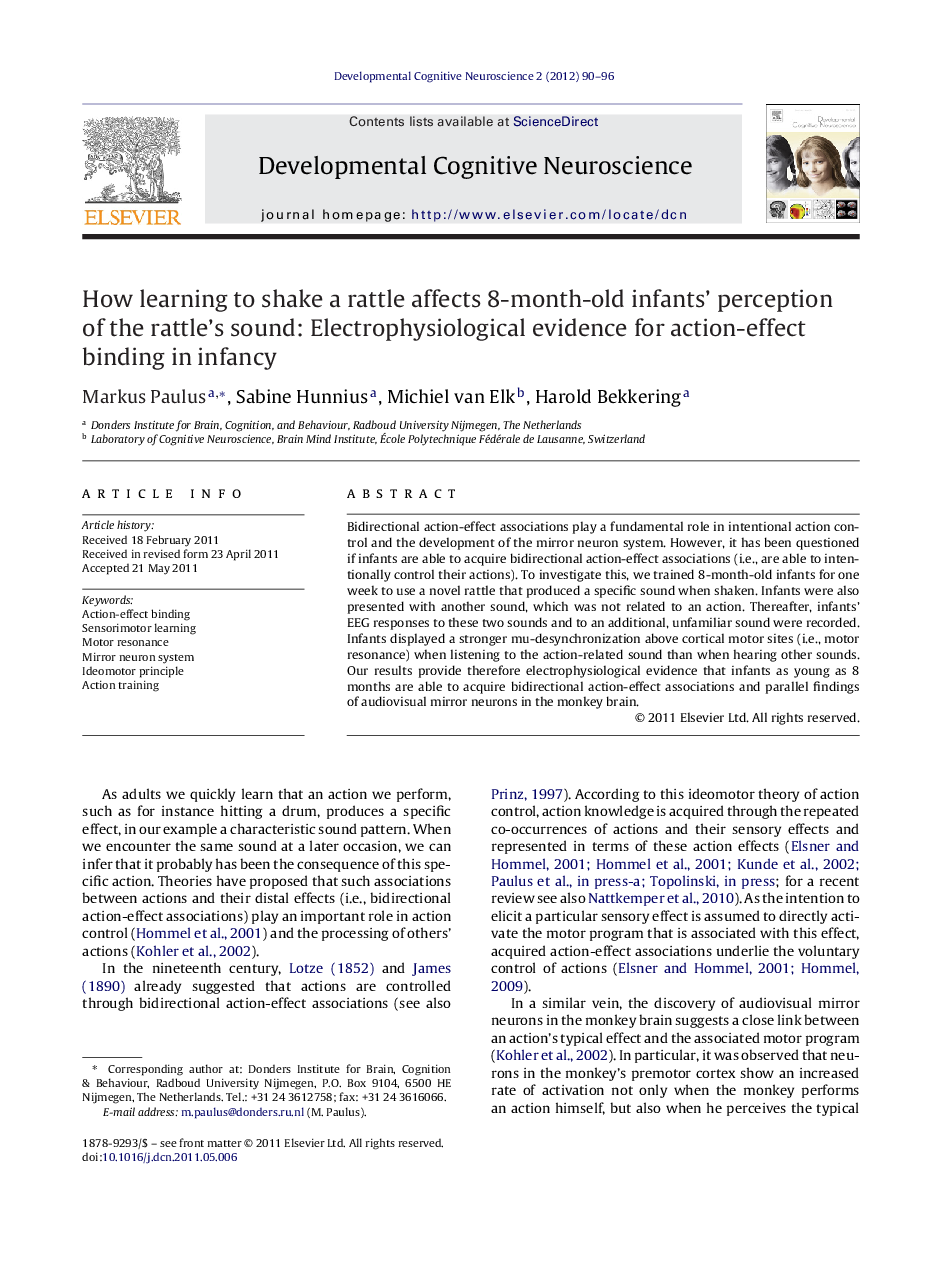| Article ID | Journal | Published Year | Pages | File Type |
|---|---|---|---|---|
| 4316787 | Developmental Cognitive Neuroscience | 2012 | 7 Pages |
Bidirectional action-effect associations play a fundamental role in intentional action control and the development of the mirror neuron system. However, it has been questioned if infants are able to acquire bidirectional action-effect associations (i.e., are able to intentionally control their actions). To investigate this, we trained 8-month-old infants for one week to use a novel rattle that produced a specific sound when shaken. Infants were also presented with another sound, which was not related to an action. Thereafter, infants’ EEG responses to these two sounds and to an additional, unfamiliar sound were recorded. Infants displayed a stronger mu-desynchronization above cortical motor sites (i.e., motor resonance) when listening to the action-related sound than when hearing other sounds. Our results provide therefore electrophysiological evidence that infants as young as 8 months are able to acquire bidirectional action-effect associations and parallel findings of audiovisual mirror neurons in the monkey brain.
* 8-month-old infants trained with a novel rattle for one week and experienced a contingent relation between action and sound. * During the subsequent test phase infants’ EEG was recorded. * Infants listened to the rattle's sound and two other sounds. * More mu desynchronization (i.e., motor activation) for the rattle's sound compared to the other two sounds.
